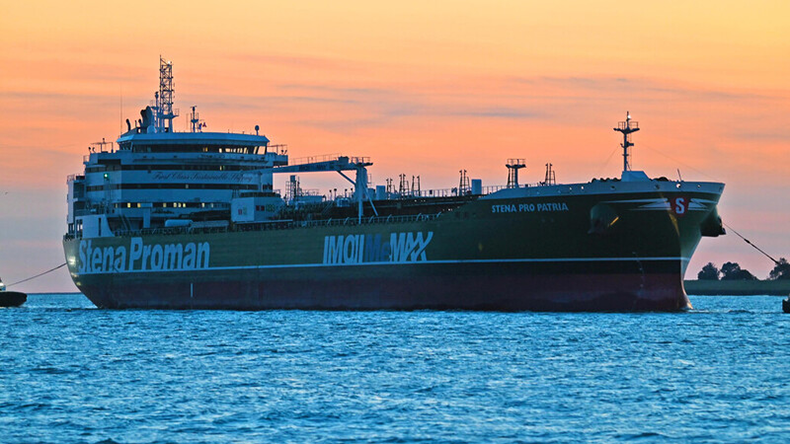Methanol was the second-most popular alternative fuel choice for newbuildings after LNG, according to classification society DNV
There are 21 dual-fuelled methanol tankers operating with four on order

BY THE END OF THE YEAR, THERE WILL BE FOUR METHANOL-FUELLED TANKERS AS PART OF A JOINT VENTURE WITH STENA BULK. Source: Hasenpusch Photo
THE tanker sector is warming up to the idea of methanol as an alternative marine fuel.
That’s the view of Anita Gajadhar, managing director at Proman Shipping, which operates a fleet of tankers for the world’s second-biggest methanol producer.
Last year marked a turnaround for methanol, according to Ms Gajadhar, who said that four of the 15 time-chartered tankers in the Proman fleet now use methanol rather than conventional fuel oil, with more fuel switches planned.
By the end of 2023, there will be six methanol-fuelled tankers in the fleet, in addition to a joint venture with Stena Bulk covering three ships.
“There’s always a chicken-and-egg situation,” she told Lloyd’s List. “It was different 12 months ago but now I think there’s this clear direction and a pathway that we can take.”
Methanol was the second-most popular alternative fuel choice for newbuildings ordered in 2022 after liquefied natural gas, according to class society DNV’s monthly analysis of alternative fuels. LNG comprised 9.7% of ships on order and methanol 1.1%.
Some 35 dual-fuelled methanol ships were ordered, including 30 for large container vessels, bringing the total vessel count to 82, DNV said.
However, the potential for other vessels including tankers and bulk carriers is also there, Ms Gajadhar said.
Proman Shipping’s methanol-fuelled tankers have been chartered to lift diesel and gasoline and other chemical products globally, she said, with the fuel available for bunkering at 120 ports worldwide.
“Charterers have been keen to understand how a methanol fuel vessel works, the efficiency of the vessel and they have been willing to use it so that they also understand the availability of methanol as a fuel,” she said. “We’ve bunkered in Ulsan, we’ve bunkered in Rotterdam, Trinidad and the US east coast. This proves that methanol is available for bunkering.
“There’s always these questions about the availability of methanol, so by doing this, it confirms to them that if they were to take a risk and invest in a methanol-fuelled tanker that they would have that supply of methanol available in the market.”
There are 21 methanol-fuelled tankers currently operating, and four on order according to DNV. Tankers comprise the largest sector by vessel type but by 2024 some 32 containerships fuelled by methanol will be delivered.
Global methanol demand was 88m tonnes in 2021, according to a presentation from Methanex, the largest methanol producer, which also operates some methanol duel-fuelled tankers via its shipping subsidiary Waterfront Shipping.
Methanex said that methanol-to-olefins manufacturing tied up 16m tonnes, traditional chemical applications another 44m tonnes, while energy related demand was at 28m tonnes
Half of the Waterfront Shipping fleet of 30 leased and owned vessels currently ran on methanol, according to the presentation, with 19 on the water by the end of 2023.
Methanex estimated that by 2025 and 2026 there would be 90 dual-fuelled vessels on the water, representing 2m tonnes of demand.
Methanol was already available in its conventional form with shipping able to shift to green methanol — produced by biomass or captured carbon dioxide as well as renewable electricity — as it became available, according to Ms Gajadhar.
The availability of green methanol has been a key focus point since container lines including MSC, Maersk and CMA CGM placed orders for boxships in 2021 and 2022. Many have since secured supplies under long-term deals, raising questions about sources and scalability for smaller owners.
Proman produced lower-carbon methanol, also known as blue methanol, in Trinidad using CO2 from ammonia production, to lower its carbon footprint, she said.
“For the tanker industry, they’re now warming up to using methanol as a marine fuel, and we’ve also seen a lot of interest as well from bulker vessels, and of course container vessels. (Tanker interest) is from the chemical side for medium-range tankers, and we’re starting to see more tanker owners being interested in looking at methanol as a marine fuel.”
Methanol fuel systems are cheaper and easier for shipyards to fit over LNG, especially on smaller vessels, according DNV.
Blue and green methanol capacity in the European Union was projected to reach 3m tonnes this year, up from 1m tonnes in 2020, according to the Methanol Institute.
Conventional methanol CO2 content was 5%–7% lower than marine gasoil and 10% less than low-sulphur fuel oil, measured on a tank-to-wake basis, the Institute said. Green methanol was 95% lower.



